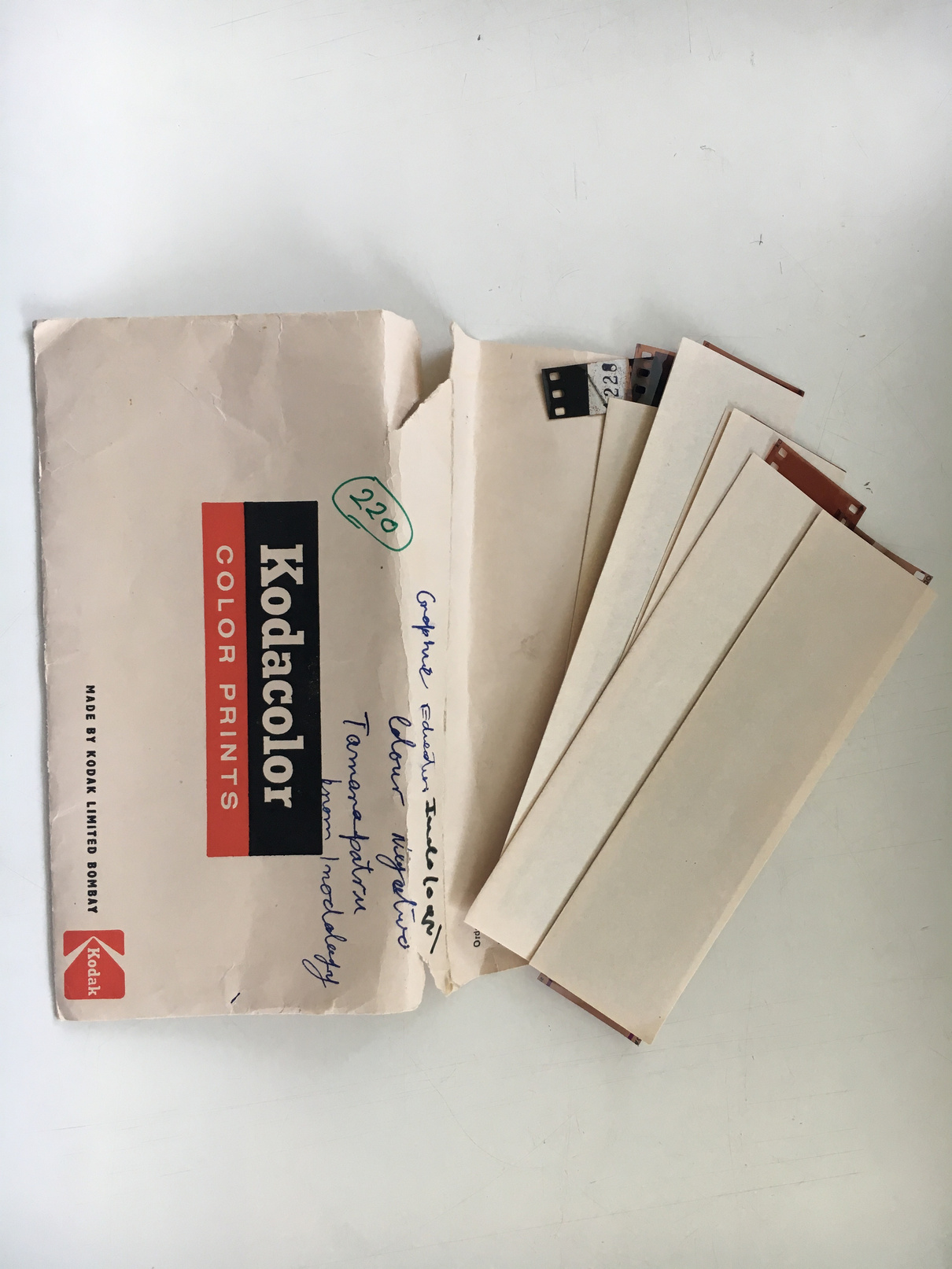
The Nehruvian Epoch
A research and archival project by Namita Kalve with NID Archives.
In 1965
the National Institute of Design in Ahmedabad, the former Prime Minister of India Ms. Indira Gandhi and Charles and Ray Eames prominent American designers and architects came together to curate and design a traveling exhibition.
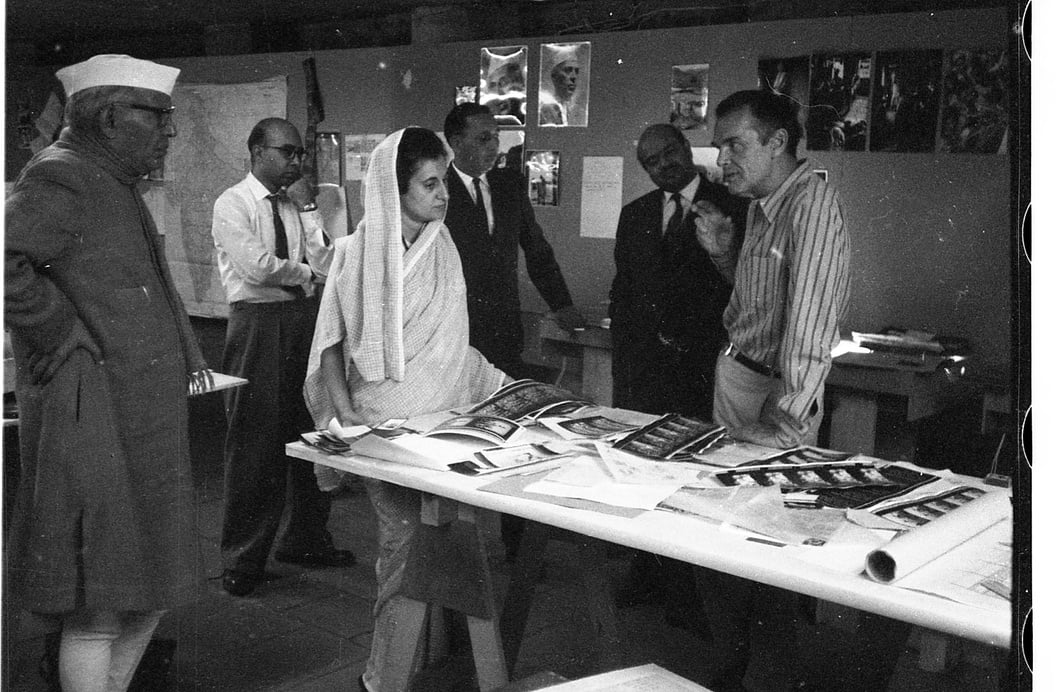
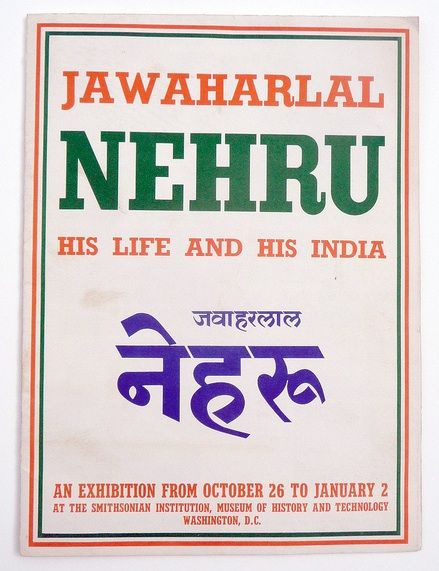
A design institute was set-up in India in 1964.
Charles and Ray first met Prime Minister Jawaharlal Nehru when he invited them to travel throughout India—a trip that led the Eameses to document their findings in the 1958 India Report and subsequently on the basis of which NID was estb. in 1964
After his death in 1964, his daughter, Indira Gandhi, tasked the Eames Office to create a posthumous tribute, showcasing his life, achievements, and leadership. The 1965 exhibition was carried out when design was still new to India. It was a time when India was just moving towards modernity, something that Nehru had wanted to happen.
An exhibition that travelled from India to America and London.
The curators embraced the chance to jointly create an exhibition that used Indian and western aesthetics and displayed India as a design driven country internationally. Therefore rather than setting it up in California, they implemented cost-effective measures like sandbag-concealed cushions for secure, lightweight global exhibition transport.
It travelled to Los Angeles, California; New York, New York; and Washington, D.C.; London, England.
Material contributed by the Nehru’s, Sarabhai’s and others.
Originally, the team of curators included the Eames, Gira Sarabhai, Pupul Jaykar, Ashoke Chatterjee among others.The exhibition was designed with the staff and students in NID because they also wanted the exhibition to have material generated from mutual interest.
The exhibition that resulted, Nehru: His Life and His India, incorporated some twelve hundred photographs, plus fabrics, art objects, and sound, as well as a re-created jail cell featuring Nehru’s prison writings.
A daughter’s love for her father as a global figure or a political agenda or both?
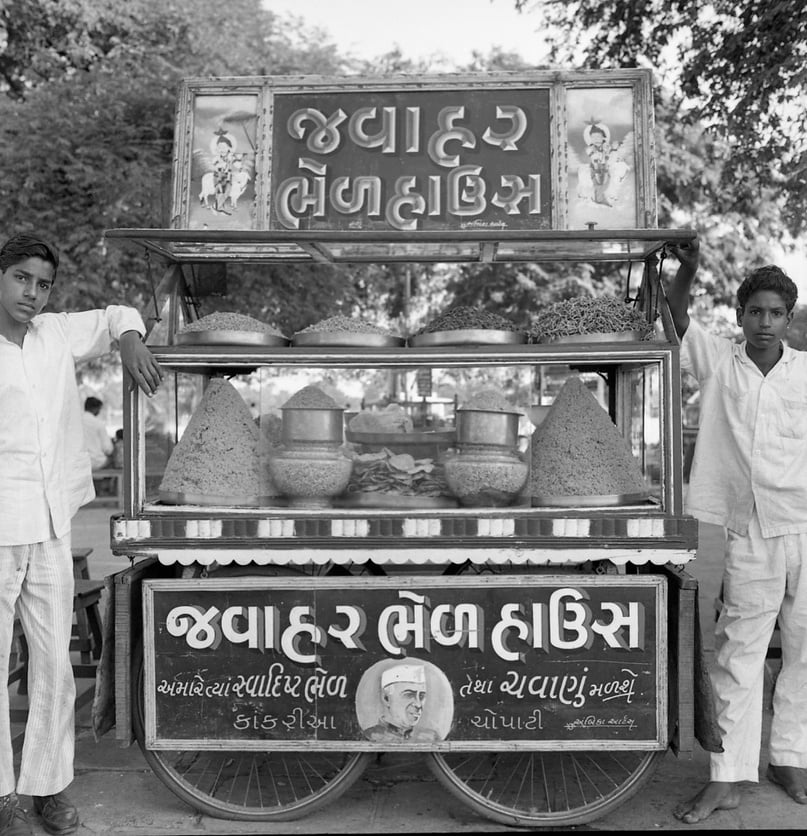
50 years later
the scanning and digitization process of the material in the NID Archives began. In 2017, the boxes with the 1965 exhibition material were taken up for scanning to create something new.
The result was a book project called The Nehruvian Epoch.
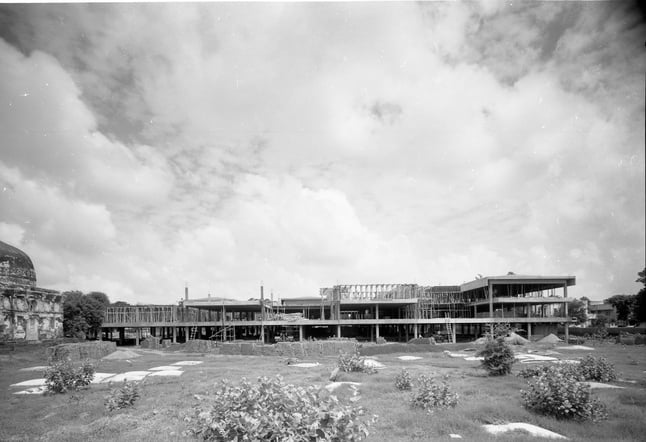
The Nehruvian Epoch features 1965 exhibition photos and behind-the-scenes shots by early NID students, offering insights into the institute's beginnings. It also delves into Pandit Jawaharlal Nehru's multifaceted life as a son, father, husband, political figure, prisoner and the first Prime Minister of Independent India.

The process
Project intent: To concise a traveling exhibition into a format that is accessible while retaining the essence of an exhibition.
**The materials mostly consisted of repros of the exhibition pictures. These repros were in the form of films of large format, 35mm, 120mm. Other materials included pictures of the exhibition during its making and while it was set up in different cities.
Requirement | Activity carried | Achievement |
Identification and sorting of material** | Creating collections with sets of negatives either stored in envelopes or loosely in wooden boxes. | The image sets created helped in identifying which storage box they belonged to, thus simplyfying the scanning process. |
Transition from a physical to a digital archive. | Box wise scanning of every envelope or loose negative. | Every scanned image had a unique serial number with metadata of keywords and other relevant information. |
Building a narrative | Primary and secondary research about the project in its previous format as an exhibition. | Identifying images from the digitized archive in order to achieve the intent. |
Adding metadata
Iterations
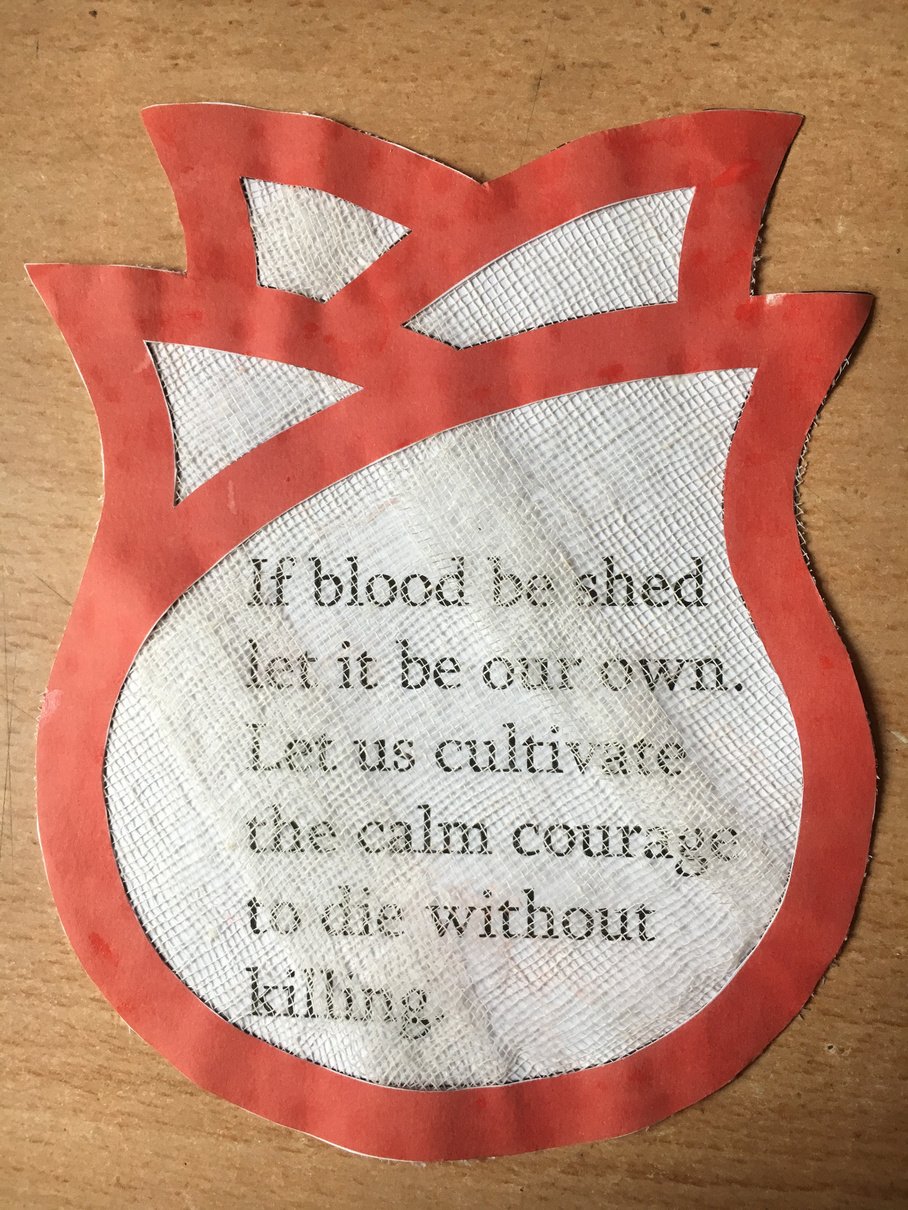
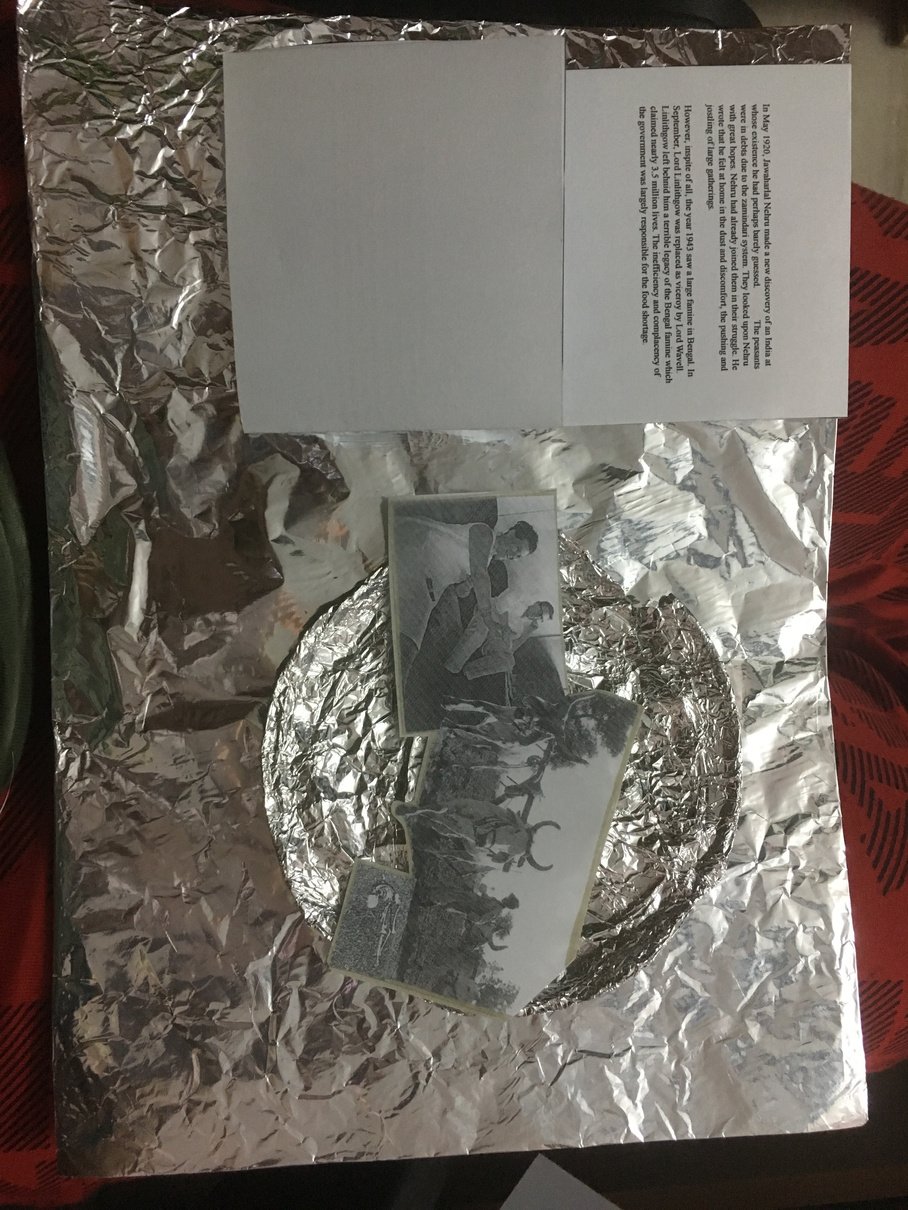
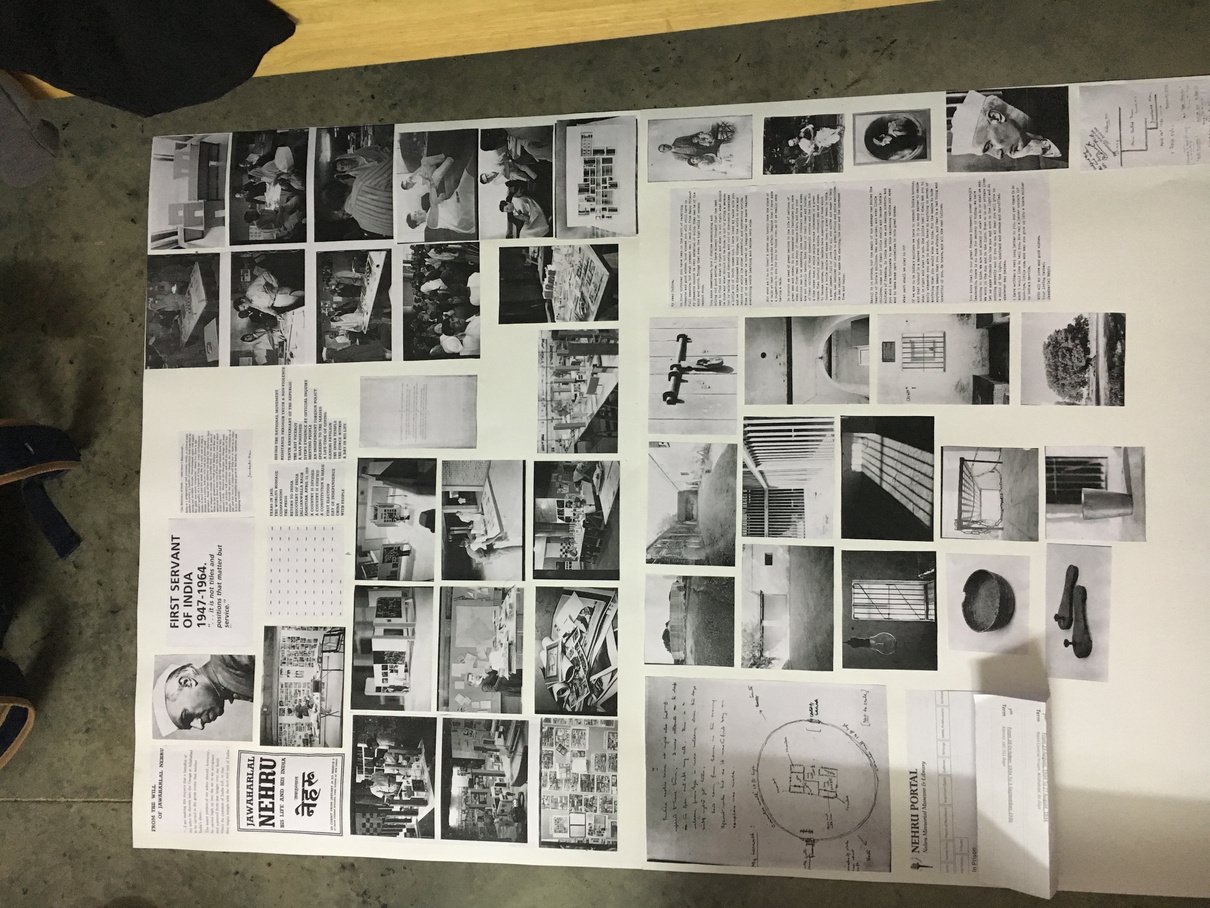
Conceptualising Quotes into physical concepts
Use of materials made of glass to show fragility; use of bandages with red stains to show bloodshed.
IMAGE JUXTAPOSITIONS
Use of image juxtapositions to build narratives. These have been incorporated in the final book.
BOOK DUMMIES
Multiple book dummies were created to arrive at the format of the final books - with maximum images and less text. From an accordion to a flip book to a coffee table book format, everything was experimented in different shapes and sizes.
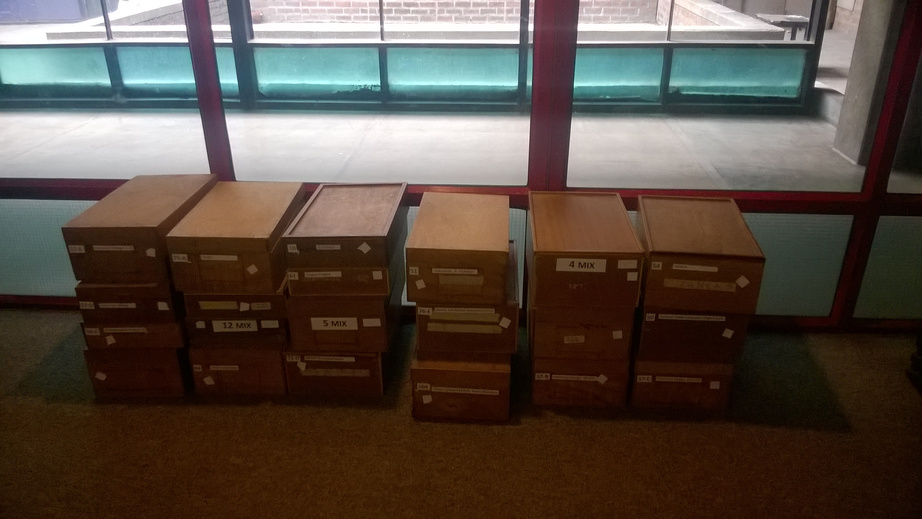
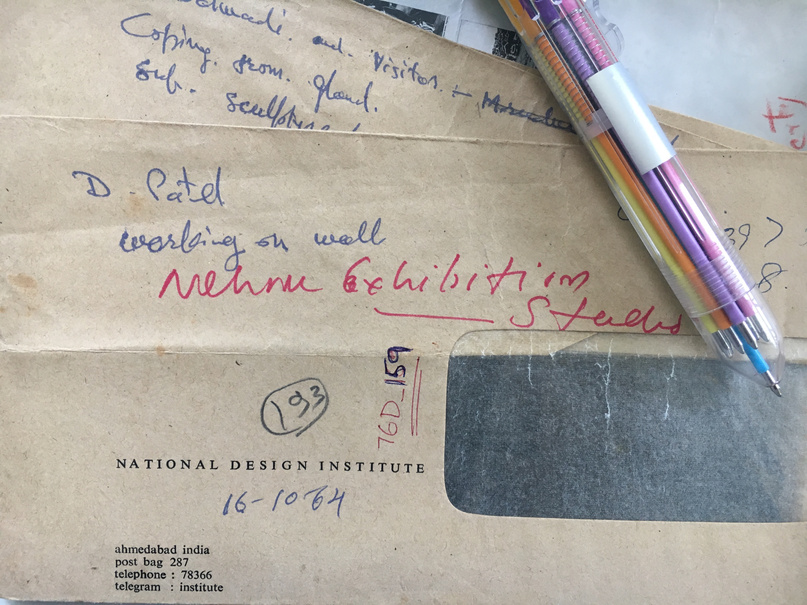
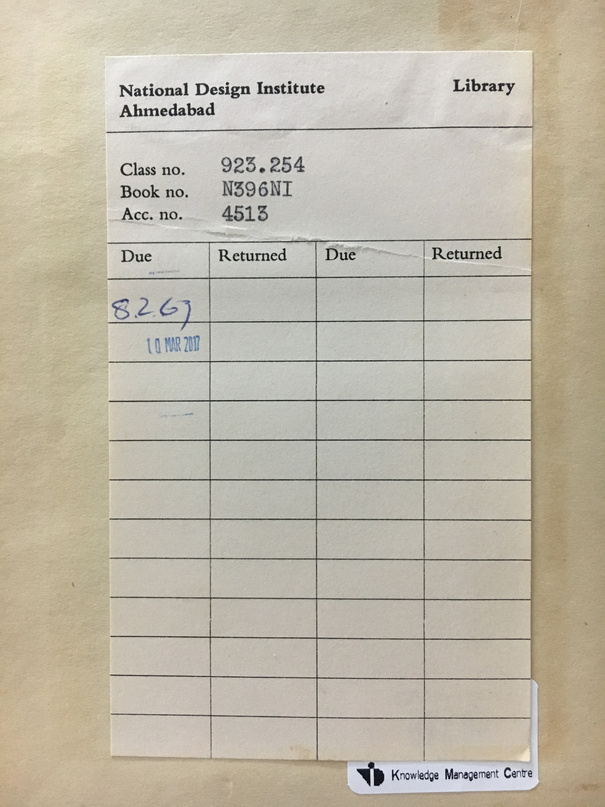
Video:
A short clip of the material while the project was WIP.
Images:
Nehru Exhibition negatives envelope.
Book issued from the NID library about Jawaharlal Nehru sometime in the 60's, when it was still in inception, post which the book was re-issued by me in 2017.
Wooden storage boxes for archival material.
The Nehruvian Epoch.
The Project
The 1965 Jawaharlal Nehru exhibition was an important milestone not just to showcase the Indian design sensibilities on an international platform. It also meant that the makers and curators felt the need to photo document the making and execution of the exhibition to reach the future generations of students at NID. Which we see is available in the archives of NID, preserved as physical copies in wooden boxes, but now also digitized during the making of this project.
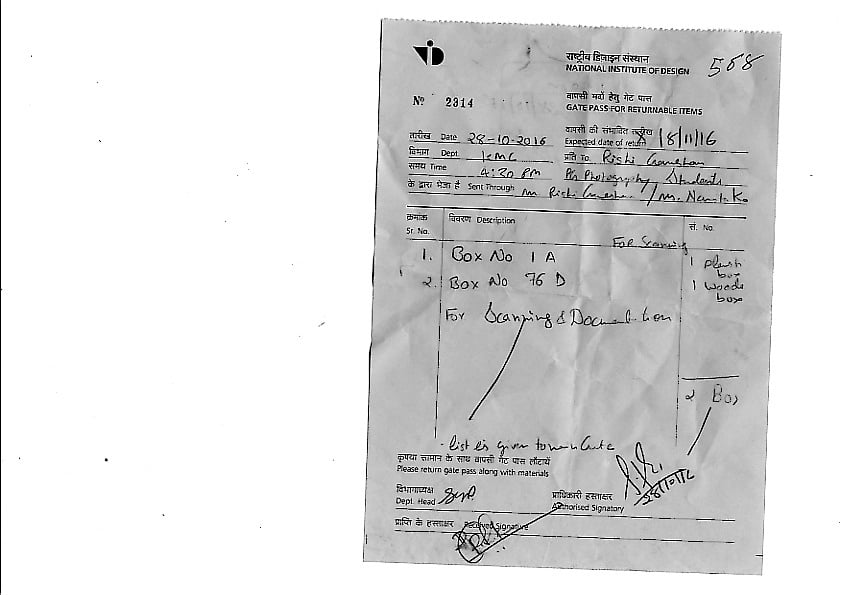
Notes
To retain the authenticity of the photographs when used for display.
Image repair, colour correction, spot removal.
Avoid repetition of images, multiple rounds of edits for selection.
Create a physical and accessible experience of an exhibition in the available space.
Generate emotions of going through an archive while providing an opportunity for physical handling of material in display.
Continued…
Continued…
Outcome - I
The Nehruvian Epoch - books
The Nehruvian Epoch is a set of four books chronologically compiled under the themes -
- Roots (1889-1912)
- Discovery (1913-1931)
- Rise (1931-1944)
- Evolve (1944-1964)
Size: 6*8in
Treatment: Short text + Images, cutouts, folding and opening to add an element of interaction with the books.
Paper: Different types of papers have been used inside at various places to generate emotions when interacting with the text.
Cover: Hardbound, Printed on canvas.
Each book comes in a muslin drawstring pouch.
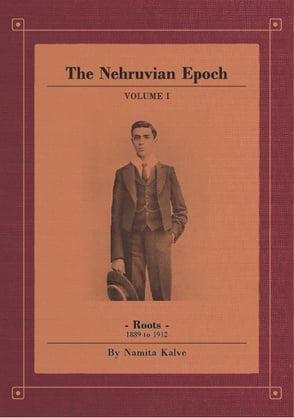
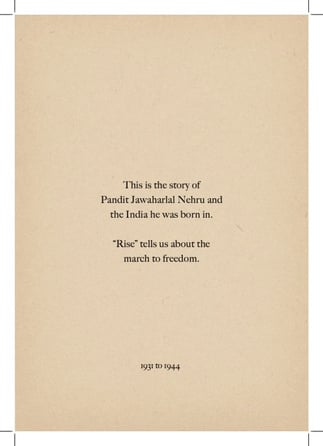
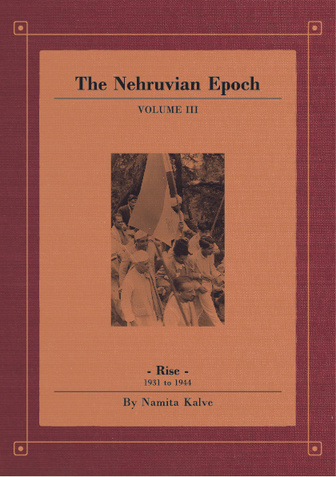
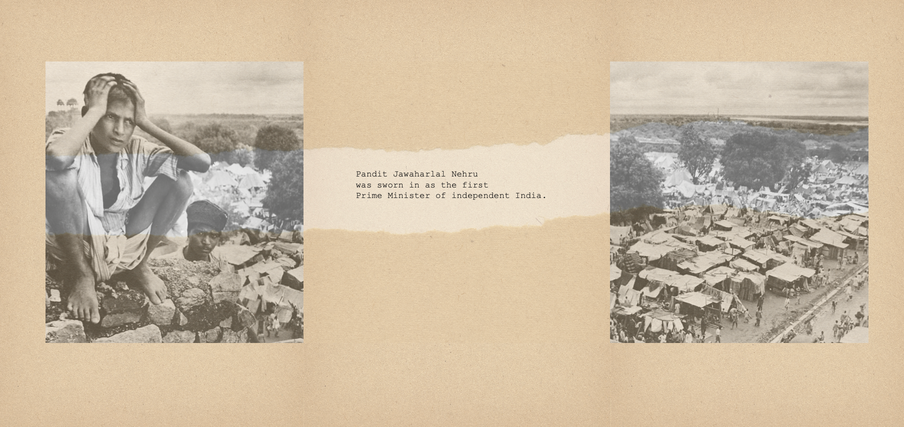
Video:
Interaction with the books.
Images:
Image juxtaposition - hunger and partitioned India.
Postcard from son to mother.
Newspaper clipping.

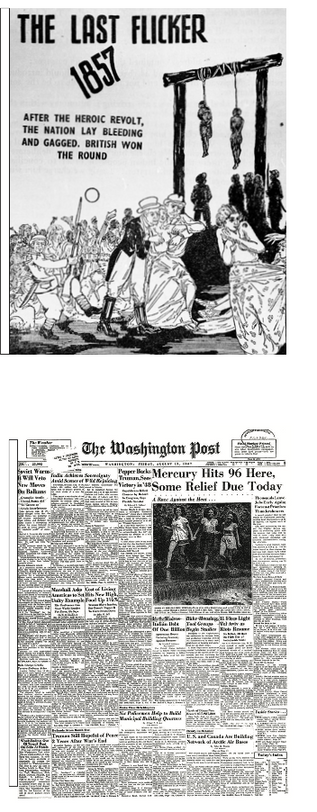
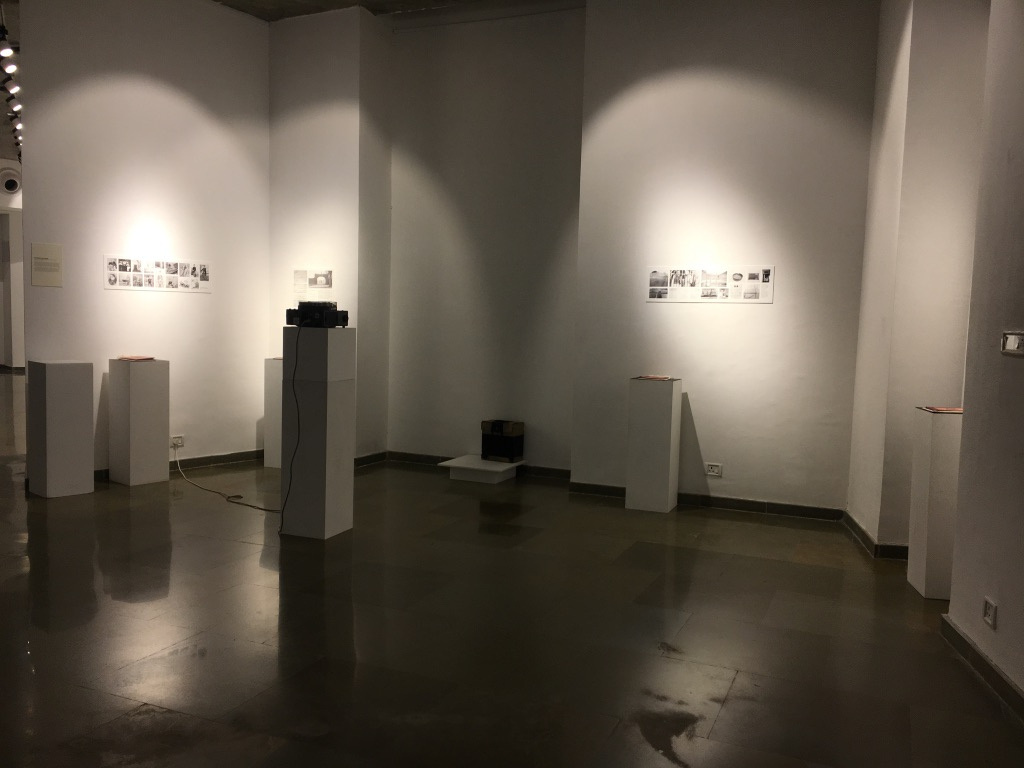
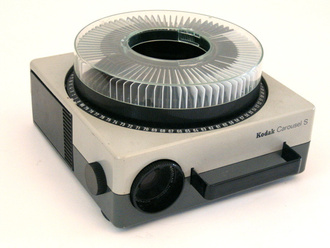
Continued…
Outcome - II
The Nehruvian Epoch - projection
After several iterations, I arrived at two sets of displays which was a combination of objects and books. However, due to the lack of space, I decided to go for a third approach.
The final executed exhibition included:
- A set of four books - ‘The Nehruvian Epoch’
- Carousel projector with slides of negatives - manually operated, with a takeaway book of the same images.
- Podiums to hold each book.
- Wall panels of selected secondary images.
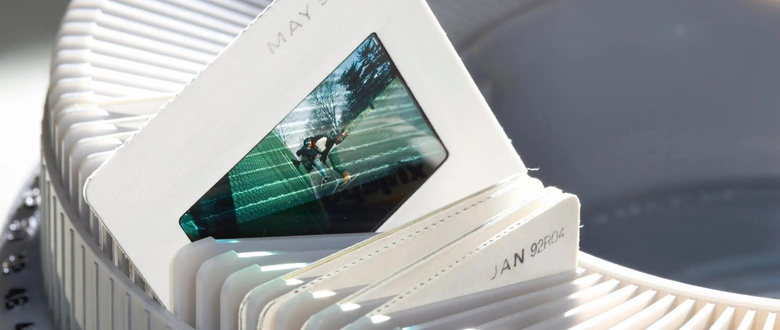
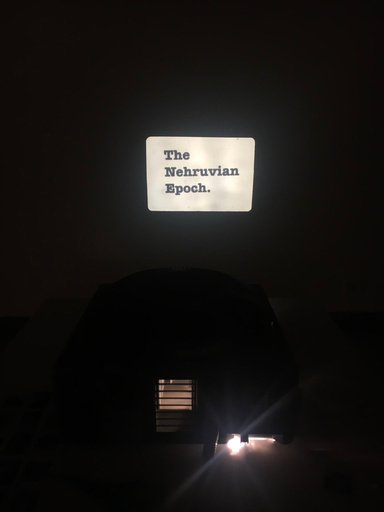
Continued…
Outcome - III
Jawaharlal Nehru: His Life and His India x The Nehruvian Epoch.
Takeaway mini book (4*5in) containing images from the original exhibition and a part of the carousel slide projection.
This book is also the precursor to the Nehruvian Epoch book set.
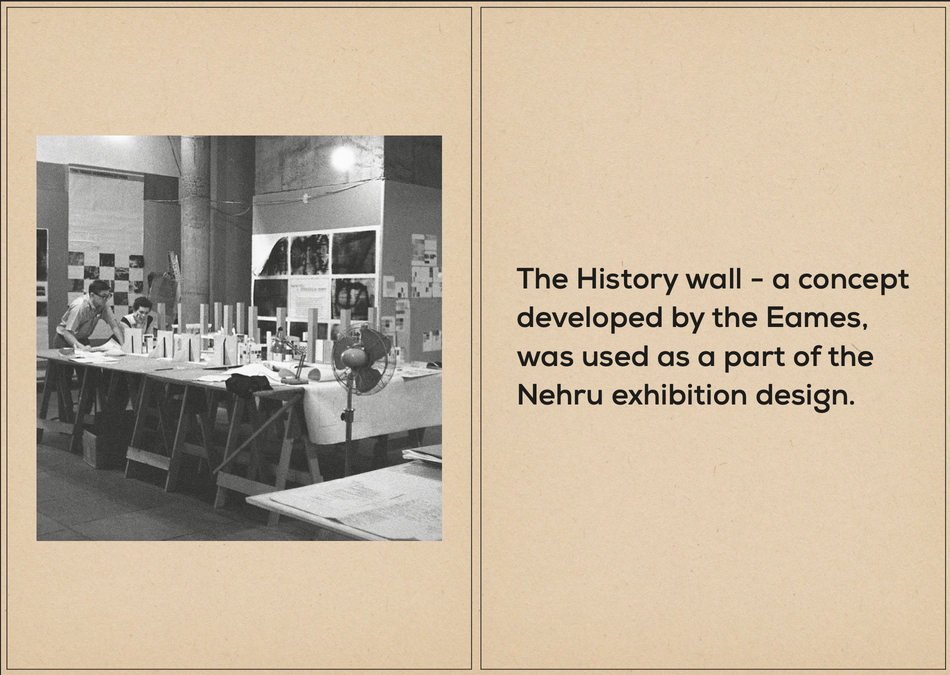
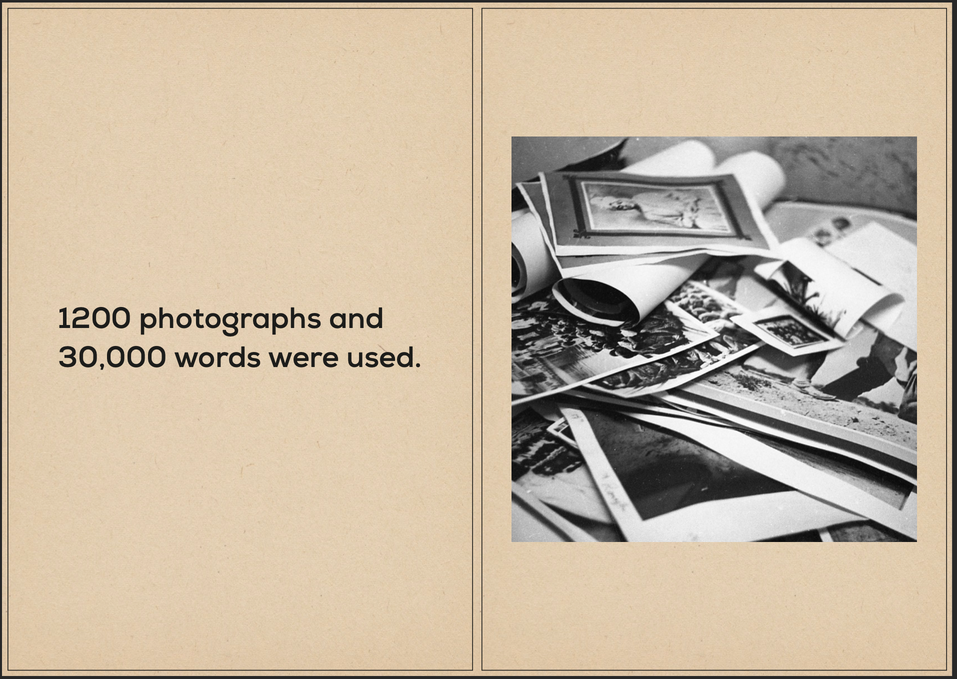
Future possibilities
After the first display of The Nehruvian Epoch project at the National Institute of Design in 2017, it was also exhibited in the following exhibitions:
- Chatterjee and Lal, Mumbai
- Instituto Cultural Cabañas | Mexico
As technology evolves, the attention span of people is reducing, making way for quicker content with lesser interaction. India being a country with strong political opinions, restricts the mass production of this set of books but gives an opportunity to create awareness regarding the importance of preservation of material for archival purposes. Small videos without adding material that can create conflict is a secondary approach but the fun lies in the physical handling and interaction with the text and images inside.
Get in touch to collaborate or know more: projects.namitak@gmail.com
IG: museumonk